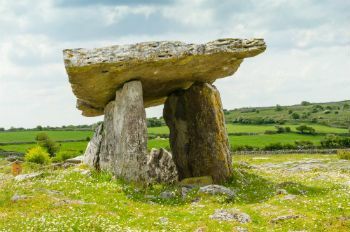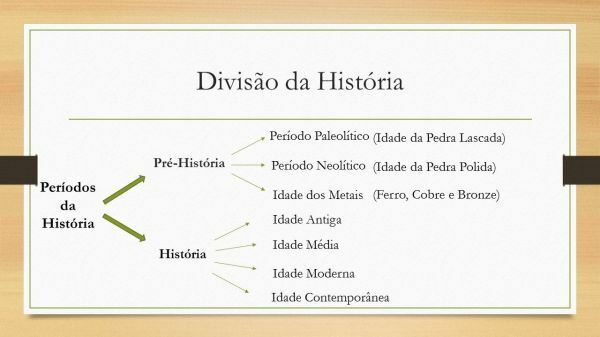The Golden Law is the law that was signed by Princess Isabel, on May 13, 1888, and who was responsible for the abolition of slavery in Brazil. With this law, Brazil definitively prohibited blacks from being enslaved in the country. The abolition of slavery was the result of a long process of struggle and mobilization of Brazilian society for the end of slavery.
Also access:Discover the history of the struggle of the Palmares quilombo
Golden Law
The Lei Áurea, as mentioned, was signed by Princess Isabel as regent of Brazil (D. Pedro II was traveling) on May 13, 1888. The bill that resulted in the abolition of slavery was proposed by João Alfredo, deputy of the Conservative Party and was approved with the princess's signature.
The decree for the abolition of slavery was very succinct and stated the following:
The Imperial Princess Regent, on behalf of His Majesty the Emperor, Mr. D. Pedro II, makes known to all subjects of the Empire that the General Assembly decreed and it sanctioned the following law:
Art. 1°: Slavery in Brazil is declared extinct from the date of this law.
Art. 2°: The contrary provisions are revoked.
It therefore orders all authorities, to whom the knowledge and execution of the aforementioned Law belongs, to comply with it, and to enforce and keep it as fully as contained in it.|1|.
With the Golden Law and the abolition of slavery, about 700,000 slaves were awarded freedom and its former owners did not receive any compensation from the government. Despite the law, there was no government initiative to integrate ex-slaves into society.
For this reason, this group remained marginalized, for he had neither education nor decent work opportunities, being subjected to accepting degrading work with low wages to survive. Not to mention that the Brazilian reality remained charged with the racism that condemned this portion of the population to marginal positions.
Read too: Princess Isabel: childhood, abolition, flight from Brazil and death
Historical context of the Golden Law
O Brazil it was the lastparentsofWestern to abolish slave labor and, precisely, for this reason, the abolition of slavery was the result of a long process that included a lot of popular mobilization and politics. This mobilization was responsible for putting pressure on the Brazilian monarchy and making it yield, enacting the Lei Áurea, on May 13, 1888.
The Golden Law was the result of three factors:
- MobilizationFromslaves, organizing escapes and taking refuge in quilombos;
- Mobilizationingroupsabolitionists who supported the fleeing slaves;
- Mobilizationpolitics which materialized the approval of the law.
We can consider that an important starting point for analyzing the process of abolition of slavery in Brazil was the year 1850. That year, the Eusébio de Queirós Law, law that prohibited the slave trade in Brazil. The adoption of this law, in turn, was the result of a very slow process that included enormous pressure from England on Brazil.
With this law, the slave trade was prohibited. Thus, the renewal of the slave population in Brazil would be limited to natural renewal. In practice, this law stipulated that slavery in Brazil had its days numbered and slaveholders, knowing Furthermore, they created the conditions for the institution of slavery to remain in Brazil as long as it was possible.
A process of interest disputes began, then, with slave workers acting on several fronts to delay as much as possible the abolition of slave labor in Brazil. The debate for the end of slavery in Brazil only gained strength in society after the Paraguay War (1864-1870). After the end of the war, associations of people began to emerge that united to promote the abolitionist cause.
The clash between abolitionists and slavers was intense in political circles and some laws that were passed during this period indicate this phenomenon. In September 1871, parliamentarians approved the law of the free womb. This law had the support of slavers, because it served to control the abolitionist cause.
The Free Womb Law decreed that wholesonborninoneslave, from 1871 onwards, would be considered free since workperarighttime course. The law determined that the freedom of the slave's son would be authorized by his master in two distinct scenarios: 8 years, the slave's master would receive an indemnity; but freed the 21 years, would not receive any compensation.
The Lei do Ventre Livre contained the spirits of abolitionists for a determined period of time, because, in the beginning of the 1880s, the agenda gained strength and mobilized the country in defense of abolition. In that decade, associations emerged, such as the Confederationabolitionist, who played a fundamental role in the end of slavery in the country, as they coordinated actions to support the slaves (and encouraged them to flee) and publicized the cause through pamphlets and newspapers.
Regarding the Abolitionist Confederation, historians Lilia Schwarcz and Heloisa Starling state:
Created in Rio de Janeiro by two notable abolitionists – José do Patrocínio and André Rebouças –, the Confederation brought together around thirty clubs and associations anti-slavery, in practically all the provinces of the Empire, and he had a full agenda: he recruited slaves, chased fugitives, produced pamphlets, organized conferences. She was also on hand to support the fugitives from the [quilombo] of Leblon, and contributed to the conditions for the protection, organization and maintenance of the refuge of slaves […]|2|.
In addition to abolitionist associations, several newspapers at the time began to appear to promote the cause of abolitionism. Newspapers, like the abolition, Eighty nine and The Federalist, are examples of those who published articles in defense of the abolition of slave labor in Brazil. In addition to newspapers, influential people at the time, such as Castro Alves, joined the abolitionist cause.
Throughout the 1880s, different forms of manifestation in defense of the abolition of slave labor happened, including the performance of public acts, such as the performance of processions and plays theatrical. Among the forms of protest against slavery in Brazil, those that had the greatest impact were carried out by the slaves themselves: rebellions and escapes.
Also access:Learn more about the influence of African culture on Brazilian culture
The mobilization of slaves throughout the 1880s was enormous. Lilia Schwarcz and Heloisa Starling state that “aware that slavery lost its legitimacy and consensus, slave groups they gained in boldness and articulation, rebelling, running away, committing crimes, clamoring for improvements in their living conditions and for autonomy"|3|.
The result of such mobilization was the growth in the number of quilombos spread across different parts of Brazil, especially in the region that had the largest number of slaves – the Southeast. The cities of Rio de Janeiro and Santos concentrated in their surroundings an enormous amount of quilombos that received the escaped slaves. In these places, the aforementioned Quilombo do Leblon it's the Quilombo do Jabaquara, respectively.
The strengthening of the abolitionist cause meant that in some states of Brazil slavery was abolished even before the Golden Law. This happened in the Ceará and in the Amazons, states that abolished slavery in Brazil in 1884. This entire context of political, popular and slave mobilization cornered the monarchy and forced them to abolish slave labor. So, on May 13, 1888, Princess Isabel signed the law that abolished slavery in our country.
|1| Law No. 3353, of May 13, 1888. To access, click on here.
|2| SCHWARCZ, Lilia Moritz and STARLING, Heloisa Murgel. Brazil: a biography. São Paulo: Companhia das Letras, 2015, p. 309.
|3| Idem, p. 308.
*Image credits: Irisphoto1 and Shutterstock


